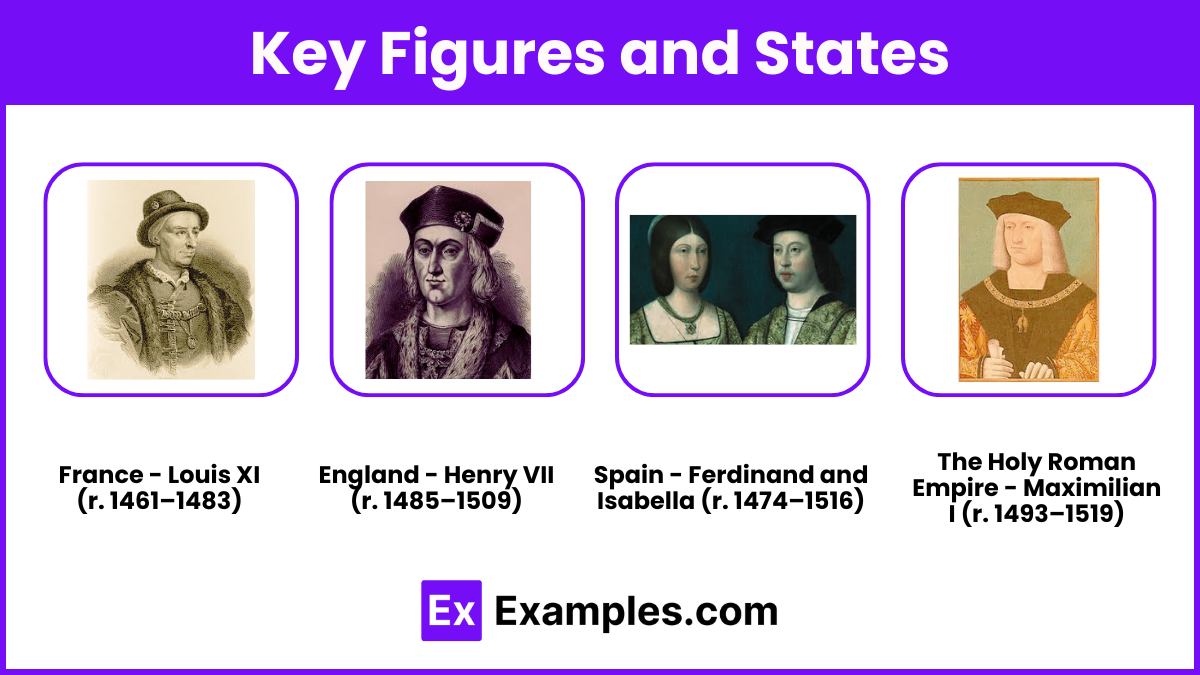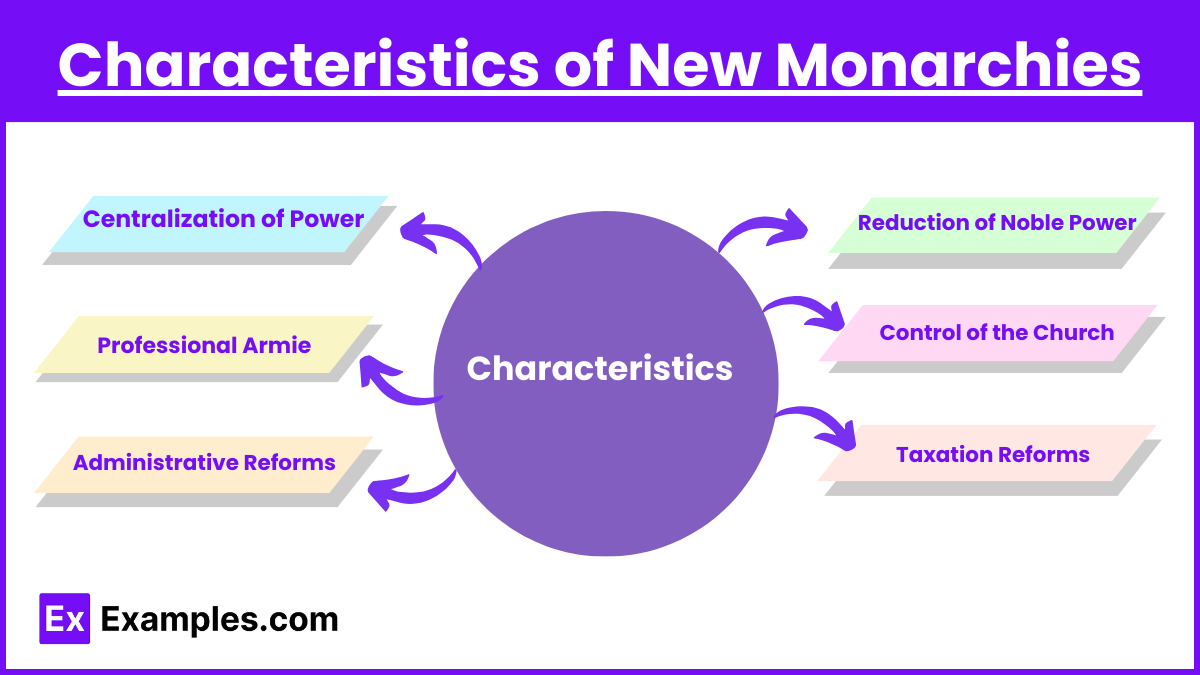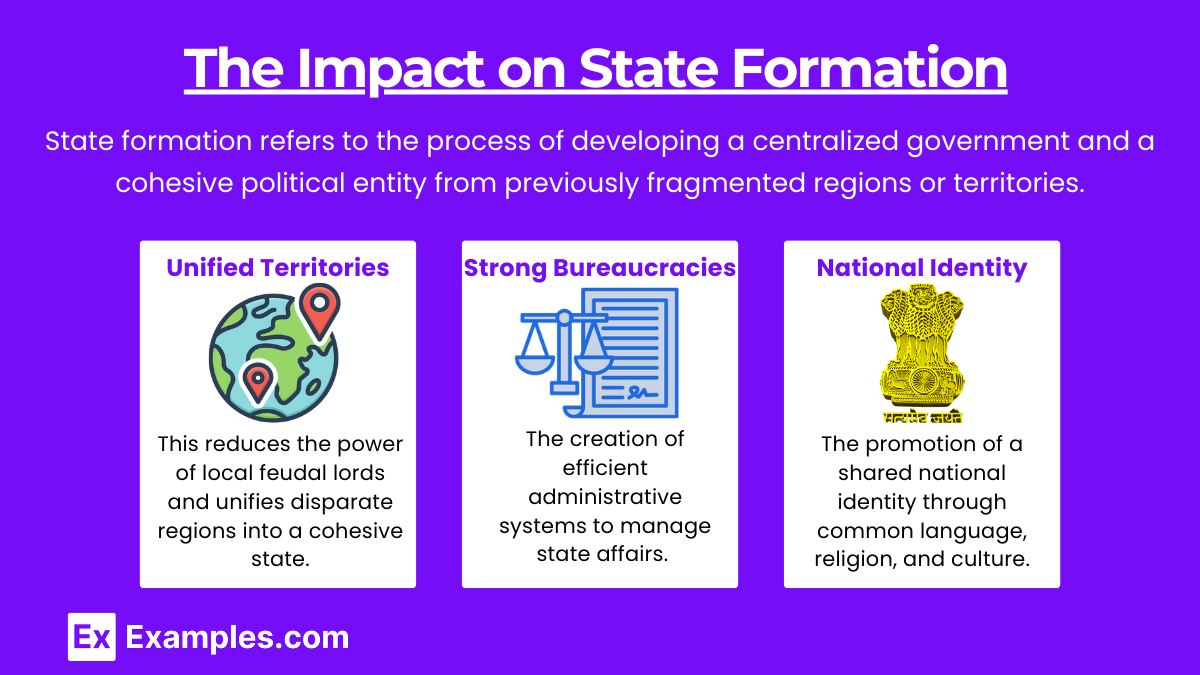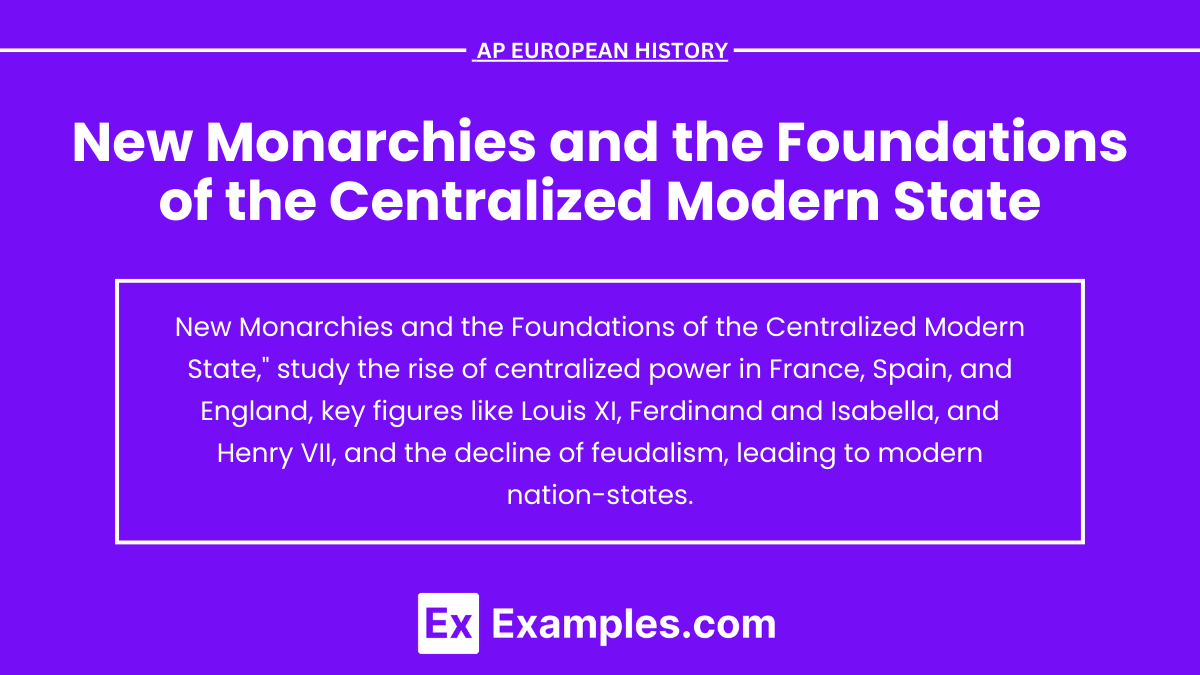The era of New Monarchies in Europe, spanning the late 15th to early 17th centuries, marked a transformative period in state-building. Monarchs like Louis XI, Henry VII, and Ferdinand and Isabella centralized power, reduced the nobility’s influence, and established professional bureaucracies. These efforts laid the foundations for modern nation-states, characterized by unified authority and more efficient governance. This pivotal shift from feudal structures to centralized administrations paved the way for the development of the contemporary political landscape in Europe in AP European History.
Learning Objectives
By studying “New Monarchies and the Foundations of the Centralized Modern State,” you should understand the centralization of power by European monarchs during the late 15th to early 17th centuries. Focus on how monarchs like Louis XI, Henry VII, Ferdinand and Isabella, and Maximilian I consolidated authority, reduced noble power, and implemented administrative reforms. Recognize the impact of these changes on the development of the modern state. Grasp the socio-political and economic transformations that laid the groundwork for future European nation-states.
Key Figures and States

1. France – Louis XI (r. 1461–1483)
Louis XI, known as the “Spider King,” was a key figure in the consolidation of royal power in France. He effectively used diplomacy, marriage alliances, and strategic wars to weaken the power of the nobility and expand his control. Louis established a more centralized administrative structure and promoted economic development.
2. England – Henry VII (r. 1485–1509)
Henry VII, the first monarch of the Tudor dynasty, is credited with laying the foundations for a strong centralized state in England. After the Wars of the Roses, he worked to reduce the power of the nobles by establishing the Star Chamber, a royal court that curtailed the judicial power of the aristocracy. He also strengthened the economy through careful financial management and by fostering trade.
3. Spain – Ferdinand and Isabella (r. 1474–1516)
The union of Ferdinand of Aragon and Isabella of Castile in 1469 marked the beginning of a unified Spanish state. They implemented a series of reforms to centralize authority, including the establishment of the Spanish Inquisition, which served both religious and political purposes. The couple also completed the Reconquista with the conquest of Granada in 1492, further solidifying their control.
4. The Holy Roman Empire – Maximilian I (r. 1493–1519)
Maximilian I of the Habsburg dynasty attempted to consolidate his fragmented empire through administrative reforms and strategic marriages. Although his efforts were only partially successful due to the decentralized nature of the Holy Roman Empire, he laid the groundwork for future Habsburg dominance in European politics.
Characteristics of New Monarchies

- Centralization of Power: New Monarchies sought to consolidate power in the hands of the king or queen. This centralization was achieved by diminishing the influence of the feudal nobility and increasing the power of the monarchy.
- Professional Armies: Instead of relying solely on feudal levies, these monarchies developed professional armies. This shift allowed monarchs to have a standing military force that could be deployed without the need for noble approval.
- Bureaucracy and Administrative Reforms: New Monarchies established more efficient bureaucracies to manage state affairs. This included the creation of various government departments and offices that handled taxation, justice, and administration, helping to strengthen royal authority.
- Reduction of Noble Power: The power of the aristocracy was curtailed through various means, including the confiscation of lands, the establishment of royal courts that bypassed local noble courts, and the promotion of non-noble officials.
- Control of the Church: Many new monarchs sought to reduce the influence of the Church within their territories. This often involved the creation of national churches or the signing of agreements that placed the Church under royal authority.
- Economic and Taxation Reforms: New Monarchies implemented economic and taxation reforms to increase revenue. This included more efficient tax collection systems, the imposition of new taxes, and the regulation of commerce. These reforms not only bolstered the royal treasury but also reduced the financial dependence on feudal lords and wealthy merchants.
The Impact on State Formation

State formation refers to the process of developing a centralized government and a cohesive political entity from previously fragmented regions or territories. The impact on state formation often involves key actions and policies that shape the structure and governance of a state, leading to the establishment of a unified and centralized authority. This process typically includes:
- Unified Territories: The consolidation of control over fragmented regions by central authorities, such as new monarchs, to bring all territories within a kingdom under direct royal rule. This reduces the power of local feudal lords and unifies disparate regions into a cohesive state.
- Strong Bureaucracies: The creation of efficient administrative systems to manage state affairs. Monarchs and central authorities often employ educated bureaucrats, including members of the bourgeoisie, to administer governance, reducing reliance on traditional nobility and increasing the state’s efficiency and control.
- National Identity: The promotion of a shared national identity through common language, religion, and culture. This fosters a sense of unity and loyalty among the population. For example, monarchs like Ferdinand and Isabella of Spain used religion and cultural policies to solidify a unified national identity.
The era of New Monarchies in Europe, spanning the late 15th to early 17th centuries, was a pivotal period in state-building that laid the groundwork for the modern centralized state. Monarchs like Louis XI of France, Henry VII of England, Ferdinand and Isabella of Spain, and Maximilian I of the Holy Roman Empire centralized power by diminishing the influence of the nobility, establishing professional bureaucracies and armies, and implementing economic and administrative reforms. These monarchs fostered a sense of national identity and reduced the Church’s influence, contributing to the consolidation of unified territories under direct royal control. The transformations during this period not only shaped the governance structures of emerging nation-states but also set the stage for future political, social, and economic developments in Europe, marking a significant departure from the fragmented and feudal past.


